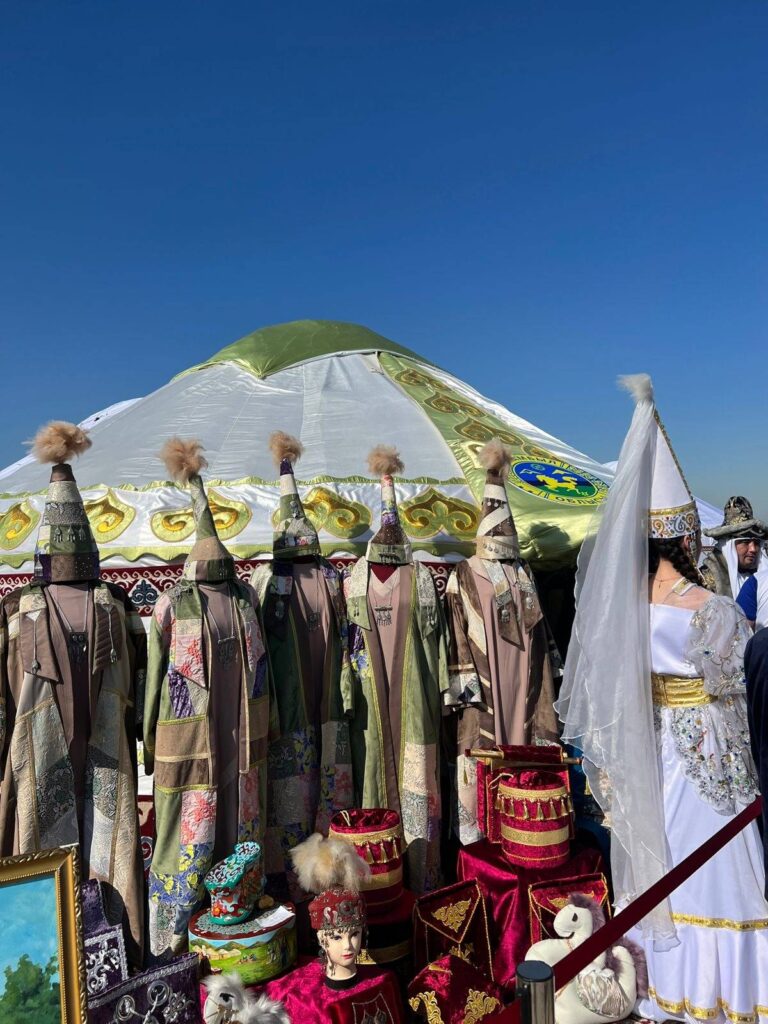Starting Over: Central Asian Countries Celebrate the Arrival of Spring
It’s time for renewal in Central Asia. Spring is arriving and it’s time to tidy up the home. Time for traditional music, cuisine and brightly colored costumes. An occasion to reflect and renew, give thanks for the past and build toward the future. Or set aside bad things that happened and start over. One of the world’s oldest holidays happens on the spring equinox, which is March 20 (Central Asia time) this year. Known as Nowruz, Navruz, Nauryz and other variations, it means “New Day” in Farsi and traces its roots to the ancient Persian religion of Zoroastrianism. This year, it coincides with the Muslim holy fasting month of Ramadan. The holiday is also celebrated in the Caucasus, the Middle East and other regions. A view of the shanyrak, the central part of the upper dome of the yurt that is shown to guests as an art object during Nauryz festivities. A shanyrak design, containing blue that represents the sky, is the national emblem of Kazakhstan. Photo: TCA Celebrations are already in full swing. This year, Kazakhstan introduced a new format for Nauryz, with events running from March 14-23. In 2009, UNESCO included the day on its list of “intangible cultural heritage of humanity.” In many parts of Central Asia, people decorate houses with branches of fruit trees to ensure a prosperous year. On the night before the spring equinox, people fill vessels with water from springs, milk and grain. It is believed that such a ritual will bring abundant rains and a successful harvest in the coming year. Holiday concerts feature traditional instruments. There are the karnai and surnai (wind instruments) and dutar (stringed) in Tajikistan and Uzbekistan, or the dombra and kobyz (both stringed) in Kazakhstan and Kyrgyzstan. Baursak, a fried bread, and Nauryz kozhe, a cool, hearty drink that symbolizes good luck, are shown during Nauryz celebrations in Almaty, Kazakhstan in 2023. Ingredients of Nauryz kozhe can include water, meat, salt, milk or yoghurt and grain. Photo: TCA A beautifully set table is another Nauryz tradition. The central place on the table in Tajikistan, Uzbekistan, Kyrgyzstan and Turkmenistan is occupied by sumanak, a dessert. It is made of germinated wheat and cooked in a metal pot for about 12 hours. According to legend, you should make a wish while stirring the sumanak. It is said that if you make a wish from a pure heart, it will definitely come true. In Kazakhstan, a special place on the table is occupied by Nauryz kozhe, a hearty soup of milk, meat, butter, two kinds of millet, rice and corn, symbolizing the seven principles of life: growth, luck, happiness, wealth, health, wisdom and heavenly protection. At home, it is poured into seven bowls and placed before seven wise elders, known as aksakals. The number has a special meaning in many aspects of the celebration. Traditionally, everyone should invite seven guests to their home and visit seven houses themselves. Nauryz is also a time of moral education and mutual...



